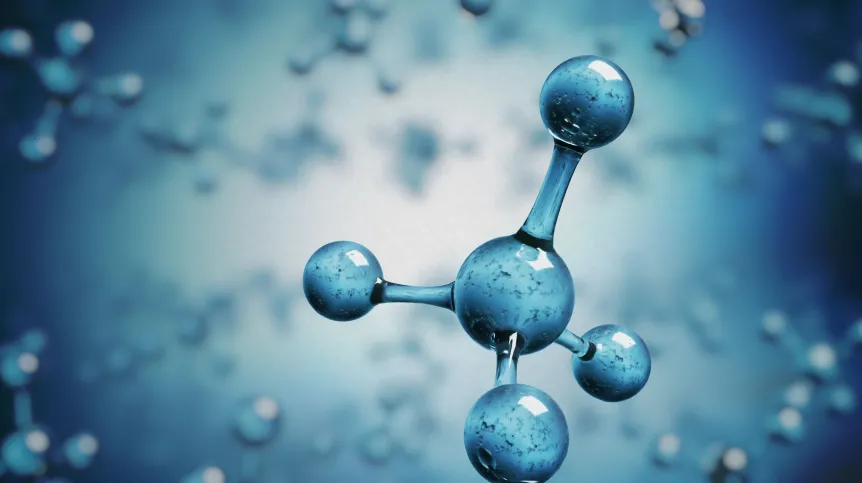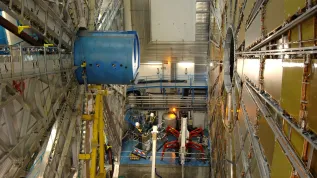
Methane, the main component of natural gas, is a major environmental concern due to its role as a potent greenhouse gas.
However, researchers from France and Poland have made a breakthrough in transforming methane into a more valuable industrial gas—ethane—using only sunlight. This could open the door to more sustainable and efficient ways to use methane, reducing waste and environmental impact.
In a recent study published in Applied Catalysis B: Environment and Energy, scientists at the University of Lille, France, demonstrated a novel method to selectively convert methane (CH₄) into ethane (C₂H₆) using a special catalyst activated by sunlight. The work is part of ongoing research aimed at developing efficient ways to utilize methane directly at the source, such as in natural gas deposits or where methane is an unwanted byproduct.
Polish researchers from the Jerzy Haber Institute of Catalysis and Surface Chemistry of the Polish Academy of Sciences played a key role in understanding the details of how the catalyst works. The study, co-authored by Professor Dorota Rutkowska-Żbik and Renata Tokarz-Sobieraj, focused on exploring how sunlight can be used to activate methane molecules and facilitate the conversion into ethane.
Methane is a major component of natural gas, but its presence is often seen as both a resource and a problem. On one hand, it is used in various industries, including as a fuel for heating and electricity generation, and is also used in the production of chemicals.
On the other hand, methane is a potent greenhouse gas, contributing to climate change. It is 70 times more effective at trapping heat in the atmosphere than carbon dioxide (CO₂), making its release into the environment particularly concerning.
The warming climate is already leading to the thawing of methane-rich permafrost, releasing more methane into the atmosphere and intensifying global warming.
While methane is an essential resource in natural gas fields, its potential is often wasted. For instance, methane is sometimes flared or burned on-site at oil and gas production sites because it is too difficult or costly to capture and transport. In many cases, methane can also pose a safety risk in mining environments, where high concentrations can lead to dangerous explosions.
The challenge for researchers is to find a way to convert methane into more valuable compounds directly at the source. One promising solution is the conversion of methane into ethane, a more reactive and industrially useful gas.
Methane is a relatively stable molecule, which makes it difficult to manipulate or convert into other compounds. In its natural state, methane is made up of one carbon atom and four hydrogen atoms, forming a strong bond that requires significant energy to break. Traditional methods of methane conversion often involve high temperatures or pressures, but these processes are energy-intensive and not very efficient.
The researchers from Lille and Poland developed a photocatalyst system that works in the presence of sunlight to facilitate the coupling of methane molecules into ethane. The process is based on a combination of silver or palladium systems, heteropolyacid (HPA), and titanium oxide (Ag-HPA-TiO₂ or Pd-HPA-TiO₂), which work together to activate the methane molecules.
In the reaction, sunlight provides the energy needed to produce H radicals from water vapor in the air. These radicals then interact with methane molecules, breaking their stable bonds and allowing them to react with each other on the surface of the catalyst. This results in the formation of ethane and the release of excess hydrogen.
‘This is the first time we’ve been able to convert methane into ethane with such efficiency using only sunlight,’ says Professor Rutkowska-Żbik. The reaction happens in a mild environment, requiring no high temperatures, making it an energy-efficient alternative to conventional methane conversion methods.
The ultimate goal is to apply this technology directly at methane source sites, such as natural gas pipelines or oil fields. The researchers suggest that the reaction could take place in elongated reactors—essentially pipes through which methane flows. These pipes would be transparent to allow sunlight to reach the catalyst, or they could be illuminated with artificial light. As the gas flows through the pipe, methane would be converted into ethane, which could then be captured and used for industrial purposes.
While the technology is promising, the process is still in its early stages. The conversion of methane into ethane is not yet as efficient as traditional methods that involve heating, but the researchers are optimistic that further refinements will lead to greater efficiency and commercial viability.
‘We are just beginning to understand how this process works, but it’s a very promising direction. We hope to continue improving the reaction rate and scalability in the future,’ Professor Rutkowska-Żbik adds.
This research could also have significant environmental implications. If methane can be effectively converted into ethane at the source, it would prevent the unnecessary release of methane into the atmosphere, reducing the overall greenhouse gas emissions.
Additionally, ethane is a valuable commodity in the petrochemical industry, where it is used to produce ethylene, a key building block for plastics, solvents, and other chemicals. Converting methane to ethane could offer a more sustainable way of utilizing natural gas resources.
The discovery of a sunlight-activated catalyst to convert methane into ethane represents a significant step forward in the field of catalysis and sustainable energy. By utilizing solar energy to activate methane molecules, researchers have unlocked a potential method to convert this abundant but problematic gas into a more valuable and usable product.
While more work remains to be done, this technology could help reduce methane emissions, improve energy efficiency, and create new industrial opportunities. With further development, it could play a key role in addressing both environmental challenges and resource utilization in the years to come.
(PAP)
PAP - Science in Poland, Ludwika Tomala
lt/ bar/ kap/
tr. RL













